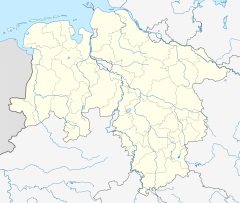Roemer- und Pelizaeus-Museum Hildesheim

The Roemer- und Pelizaeus-Museum Hildesheim is an archaeological museum in Hildesheim, Germany. Mostly dedicated to ancient Egyptian and ancient Peruvian art, the museum also includes the second largest collection of Chinese porcelain in Europe. Furthermore, the museum owns collections of natural history, ethnology, applied arts, drawings and prints, local history and arts, as well as archeology. Apart from the permanent exhibitions, the museum hosts temporary exhibitions of other archaeological and contemporary topics.
In 2000, the old building, originally built in the 1950s, was replaced by a new building, significantly increasing the space available for exhibitions.
The current museum is the result of the union of the Roemer Museum, founded in 1844 (and named after one of the founders, Herrmann Roemer), and the Pelizaeus Museum, established in 1911, that had housed the private collection of Egyptian antiques of Wilhelm Pelizaeus.
Repatriation
[edit]In 2023 the museum was one of seven German museums and universities to return Māori and Moriori remains to the Museum of New Zealand Te Papa Tongarewa in New Zealand.[1][2]
Gallery
[edit]References
[edit]- ^ Kolirin, Lianne (2023-06-14). "Mummified heads of Māori ancestors returned to New Zealand from Germany". CNN. Retrieved 2023-06-15.
- ^ "Germany returns the remains of 95 Indigenous people to New Zealand". euronews. 2023-06-14. Retrieved 2023-06-15.
External links
[edit]- Official website (in English)
52°08′59″N 9°56′39″E / 52.14972°N 9.94417°E
- Archaeological museums in Germany
- Museums in Lower Saxony
- Egyptological collections in Germany
- Art museums and galleries in Germany
- Buildings and structures in Hildesheim
- Tourist attractions in Hildesheim
- Museums established in 1844
- 1844 establishments in Germany
- Museums established in 1911
- 1911 establishments in Germany
- Ancient Egypt stubs
- Lower Saxony building and structure stubs





